Photos: The Bones of Mount Vesuvius
Mount Vesuvius
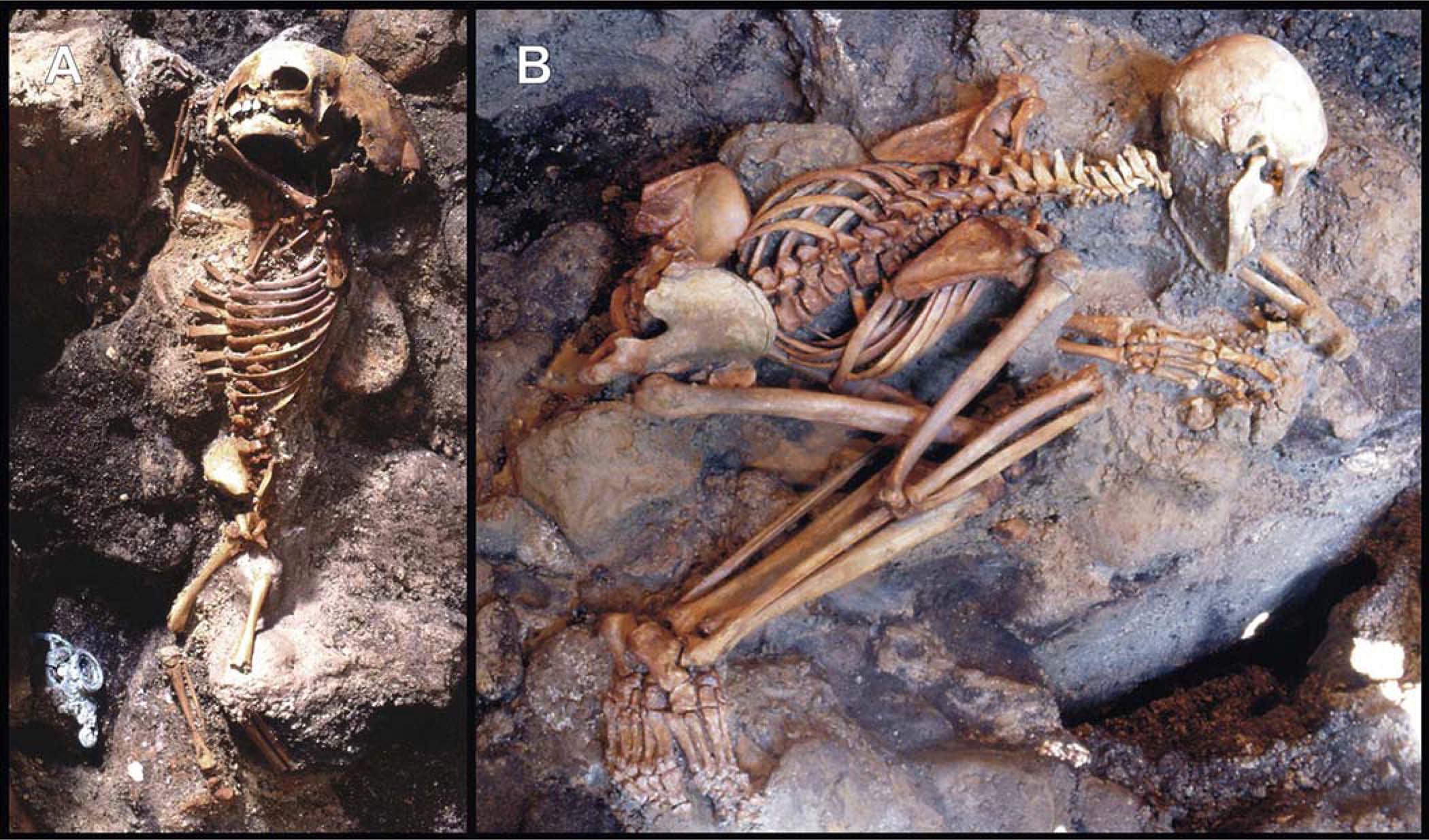
Mount Vesuvius rises over the ruins of the ancient Roman city of Pompeii. In A.D. 79, Mount Vesuvius erupted, destroying Pompeii and the city of Herculaneum, which was even closer to the volcano's crater. Now, new research suggests that some victims of Vesuvius in Herculaneum died almost instantly from heat shock. [Read more about the Vesuvius research]
Vesuvius Victims

The skeleton of a child (left) and a young adult man excavated from waterside chambers at Herculaneum. More than 100 people had taken refuge in these chambers as Vesuvius erupted. They died when a pyroclastic cloud of toxic gases and ash swept over the town. Researchers debate whether these victims died of asphyxiation or whether they were killed instantly by the heat of the pyroclastic cloud.
Charred Skulls
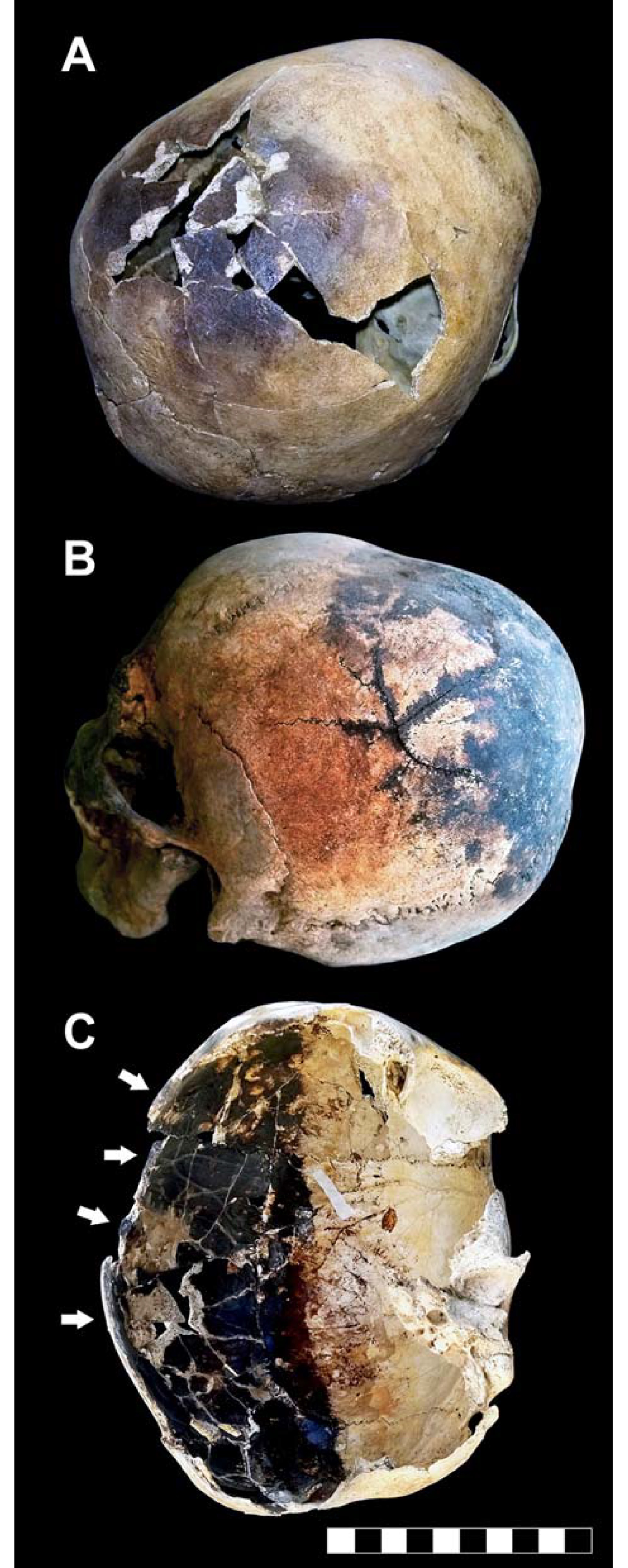
The bodies from Herculaneum were subject to temperatures hot enough to burn away at least some flesh and char and crack bone. New research suggests that the victims' brains and blood may have boiled, and the pressure of their vaporization could have exploded their skulls. However, not all researchers agree that the temperatures of pyroclastic flow would have caused such a dramatic death; the victims may have simply suffered bad burns and respiratory damage and the bones could have cracked and charred as the volcano continued to spit hot ash for hours.
Iron-rich crusts
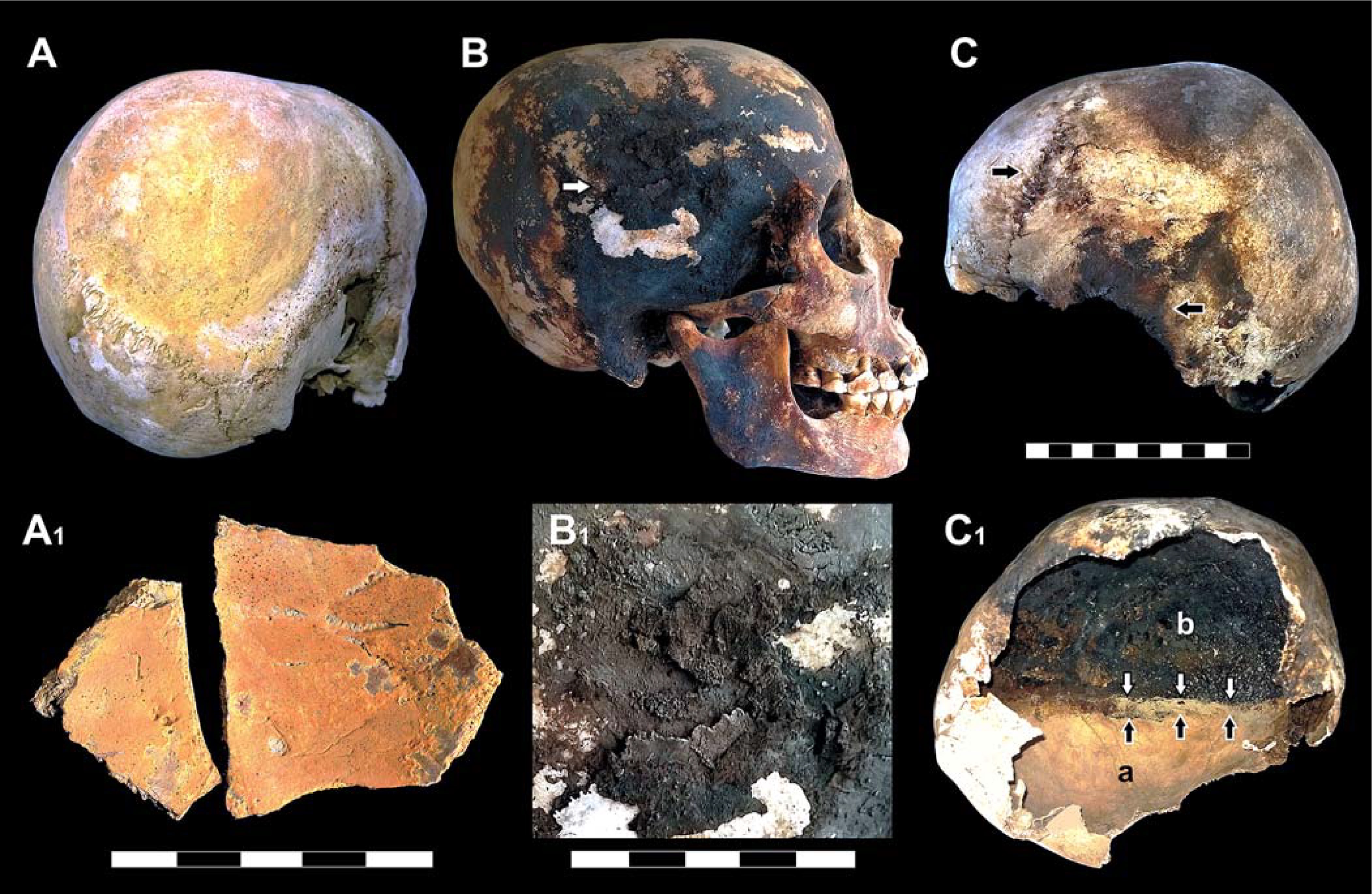
Beyond charring, the researchers also observed iron-rich mineral deposits on the skulls, as seen here on the skulls and cranium fragments of a child and several adults. These deposits may have come from blood vaporizing in the heat of the pyroclastic flow.
Skull staining
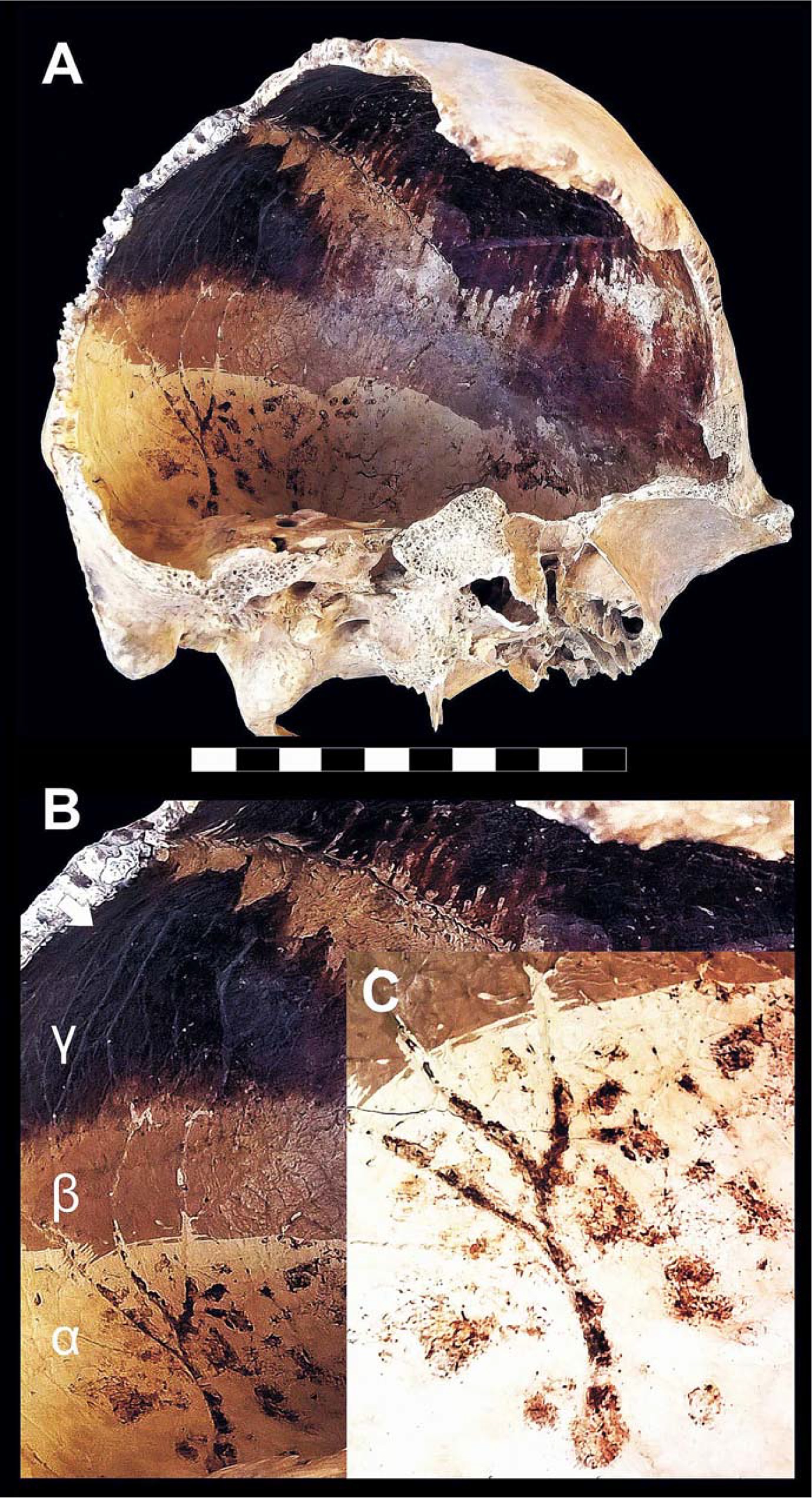
Some skulls show dark residues that seem to follow the lines where veins once ran. Pyroclastic flows are hot ash avalanches filled with boulders, rock fragments and tiny shards of volcanic glass. They can kill by pummeling victims with debris, choking them with ash and toxic gas or by burning victims' skin and lungs.
Ash casts
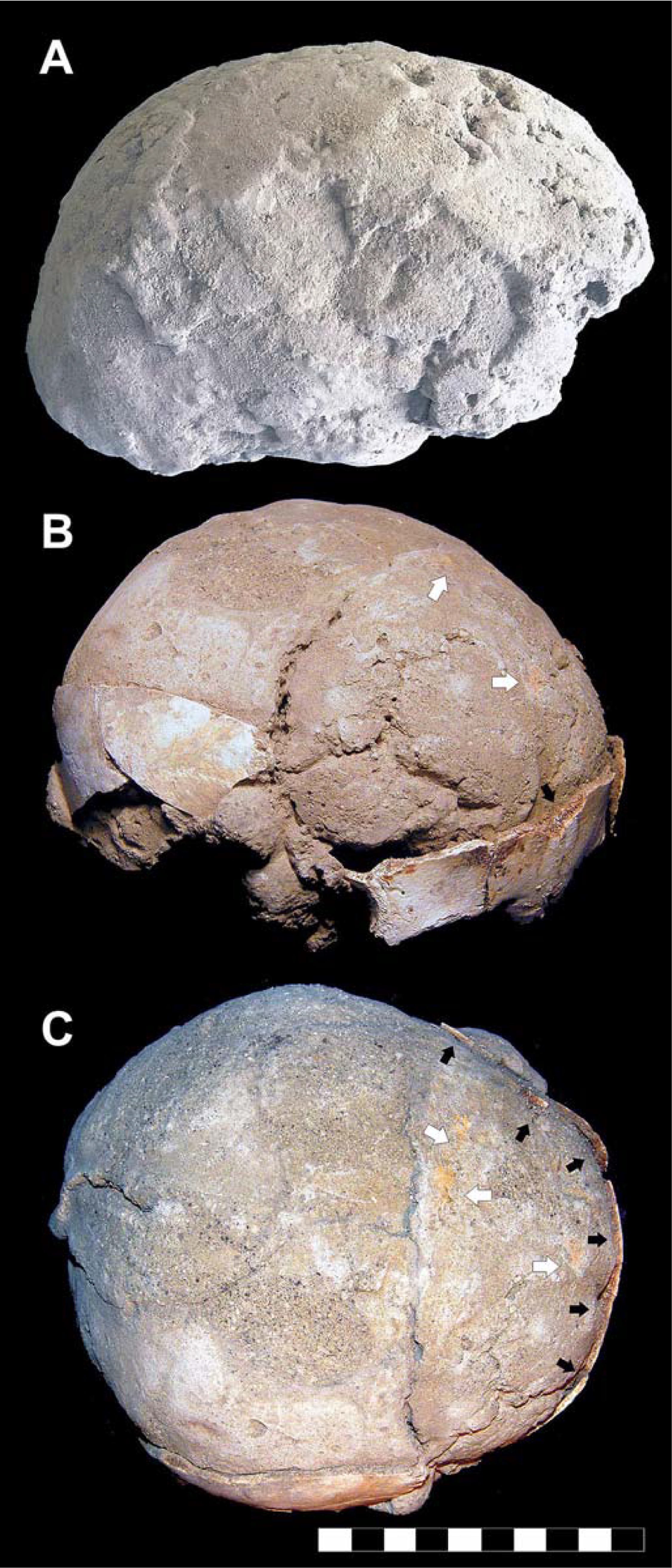
Some skulls from Herculaneum are filled with hardened ash from the volcanic eruption. The top image is a cast made of this ash from the skull of an adult male from Herculaneum. The middle image is the skull of child found in a home in the town. The same skull from a different view in the bottom image shows the anatomical features of the skull imprinted on the ash.
Red residues
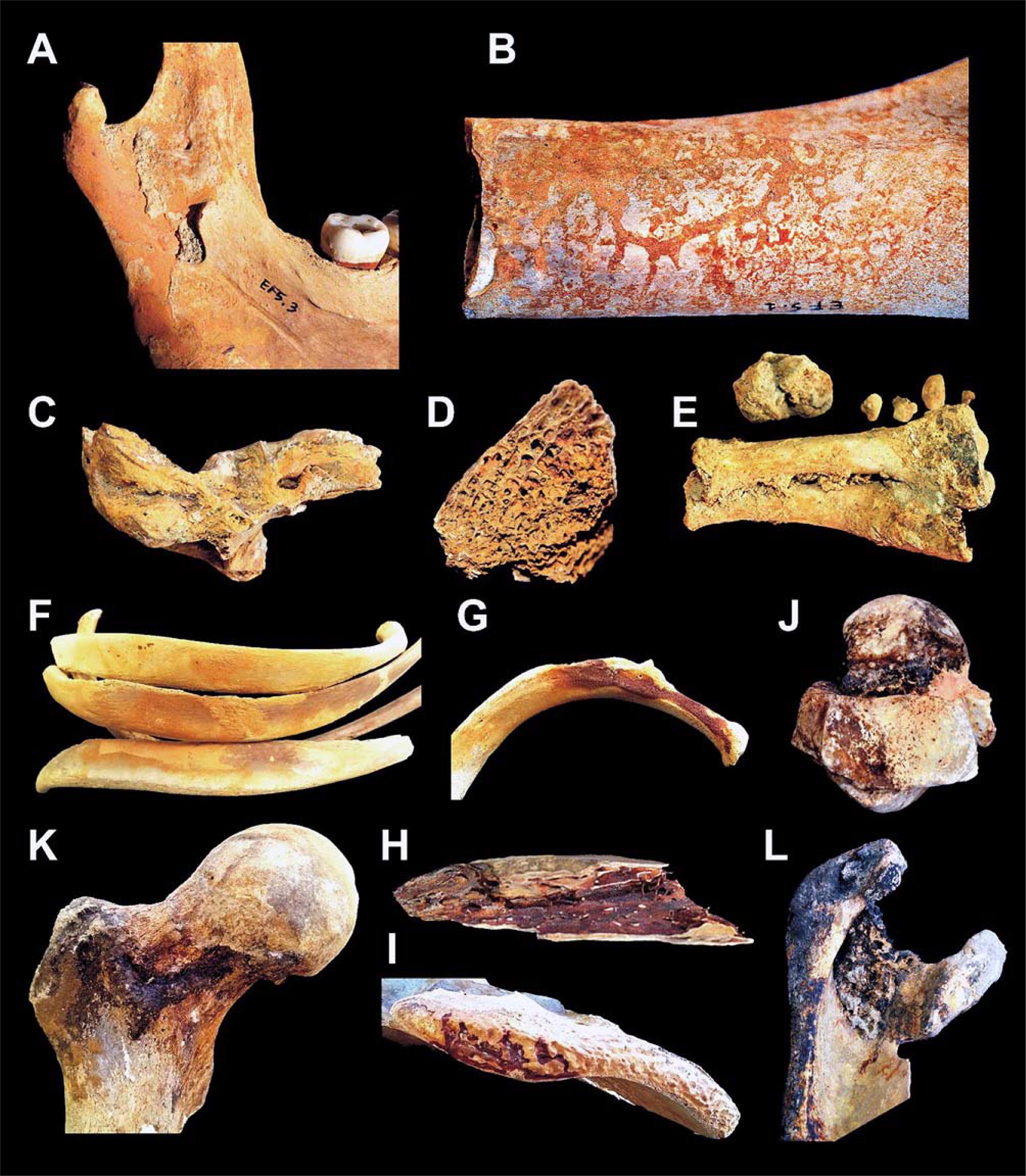
Ash that was in contact with bodies from the Herculaneum waterfront shelters sometimes holds red residues that may be the result of heated blood and bodily fluids. These findings indicate that the victims may have died very rapidly of heat shock rather than asphyxiating, researchers report in a new study from the journal PLOS One.
Get the world’s most fascinating discoveries delivered straight to your inbox.
Written in bone
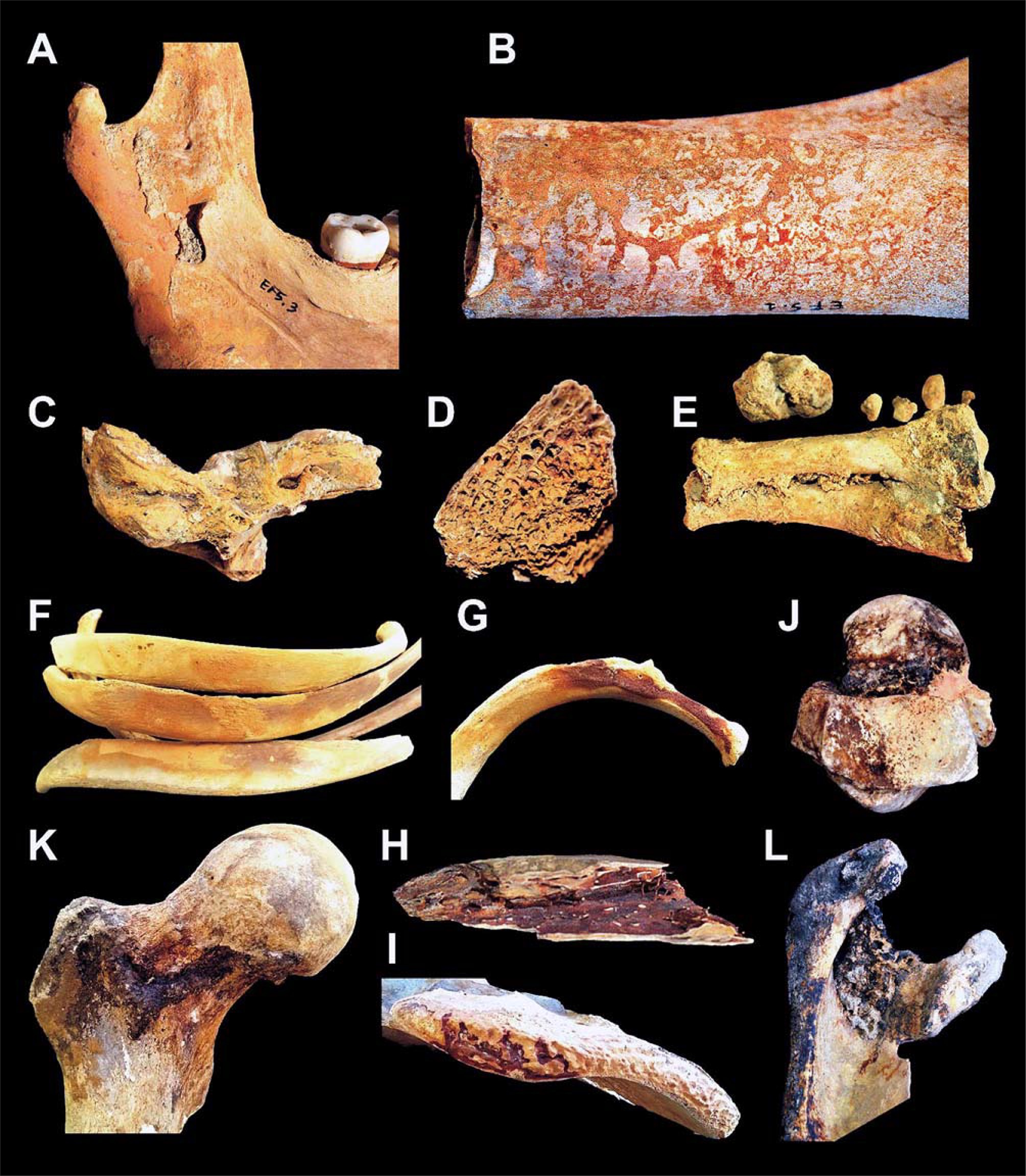
Bones from the Herculaneum waterfront showing red and black residues, probably the result of heat from the pyroclastic cloud. The death toll of the Vesuvius eruption is unknown, but around 1,500 bodies have been discovered preserved in ash in Herculaneum and Pompeii, as well as other sites around the volcano.
Frozen in death
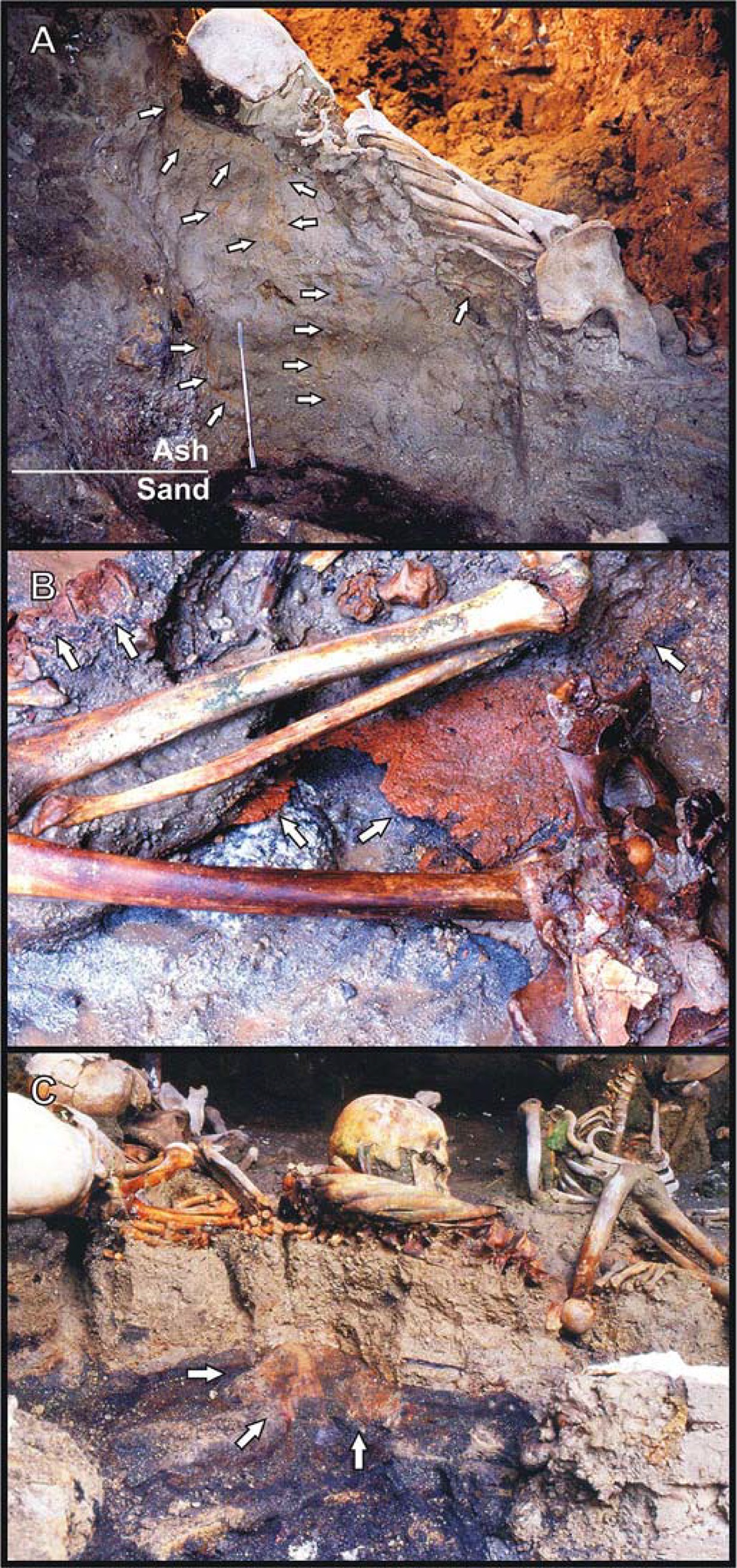
Bones as they were found in Herculaneum's waterside shelters. Red mineral residues that may be from the victims' blood surround the skeletons. Vesuvius killed by collapsing roofs with the weight of pumice and ash, with pyroclastic flows and perhaps with tsunamis as ash and rock crashed into the Mediterranean.
Tiniest Victim
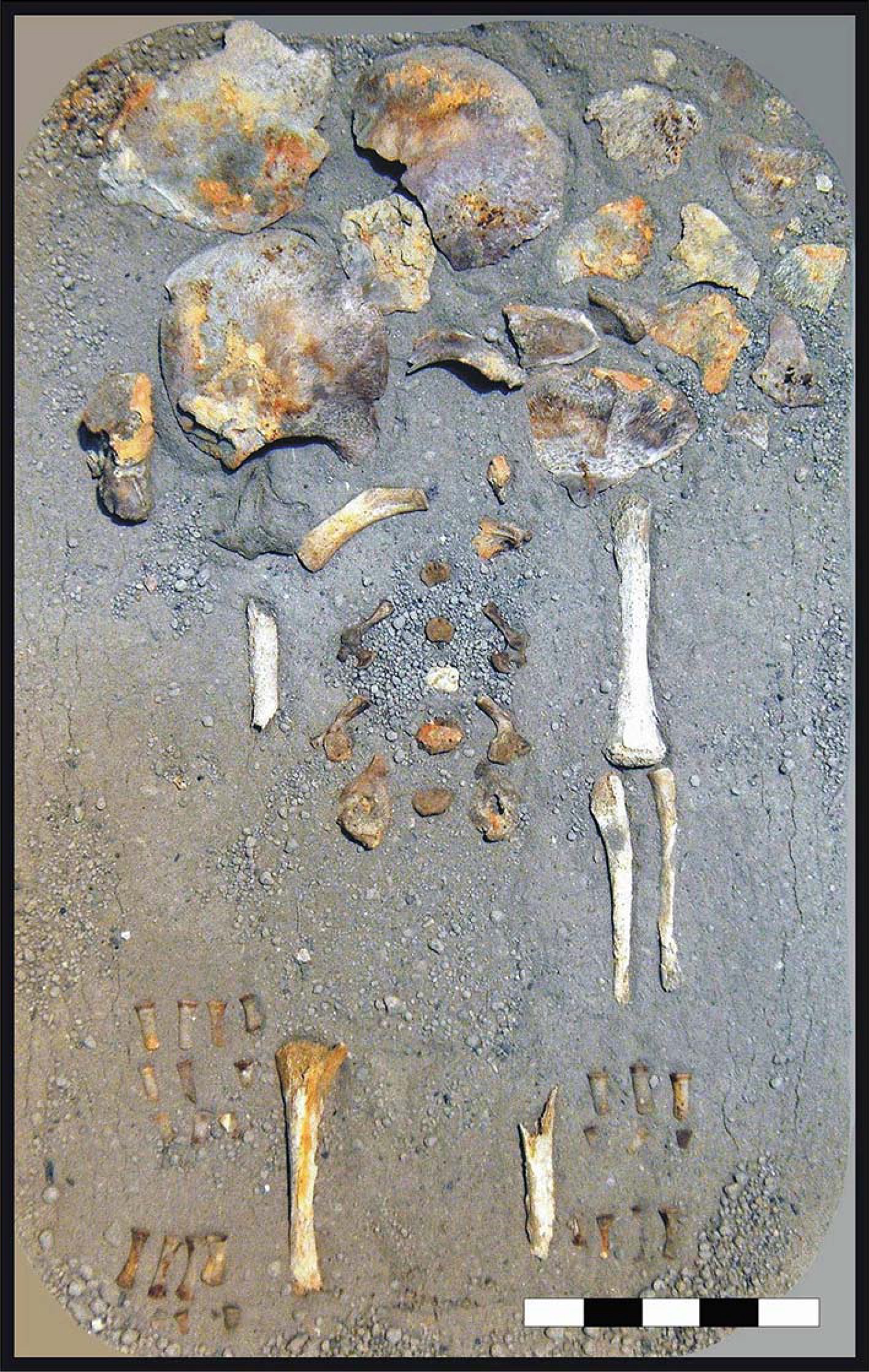
The bones of a seven-month-old fetus, found within the pelvis of its mother in the waterfront chambers of Herculaneum. These bones, like some of the bones of adults and children found in the chambers, show red residues that may be from heated blood or bodily fluids.

Stephanie Pappas is a contributing writer for Live Science, covering topics ranging from geoscience to archaeology to the human brain and behavior. She was previously a senior writer for Live Science but is now a freelancer based in Denver, Colorado, and regularly contributes to Scientific American and The Monitor, the monthly magazine of the American Psychological Association. Stephanie received a bachelor's degree in psychology from the University of South Carolina and a graduate certificate in science communication from the University of California, Santa Cruz.


